
 |
Eager Space | Videos by Alpha | Videos by Date | All Video Text | Support | Community | About |
|---|
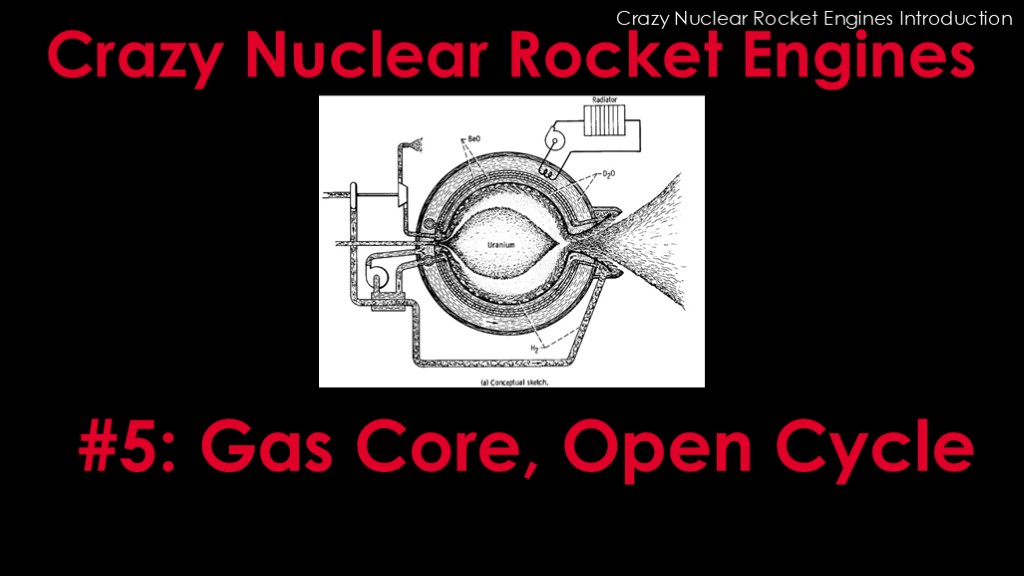
This is episode 5 of the series on crazy nuclear rocket engines, where we will explore the gas core, open cycle design.
If you haven't watched it, please watch the introduction video now.
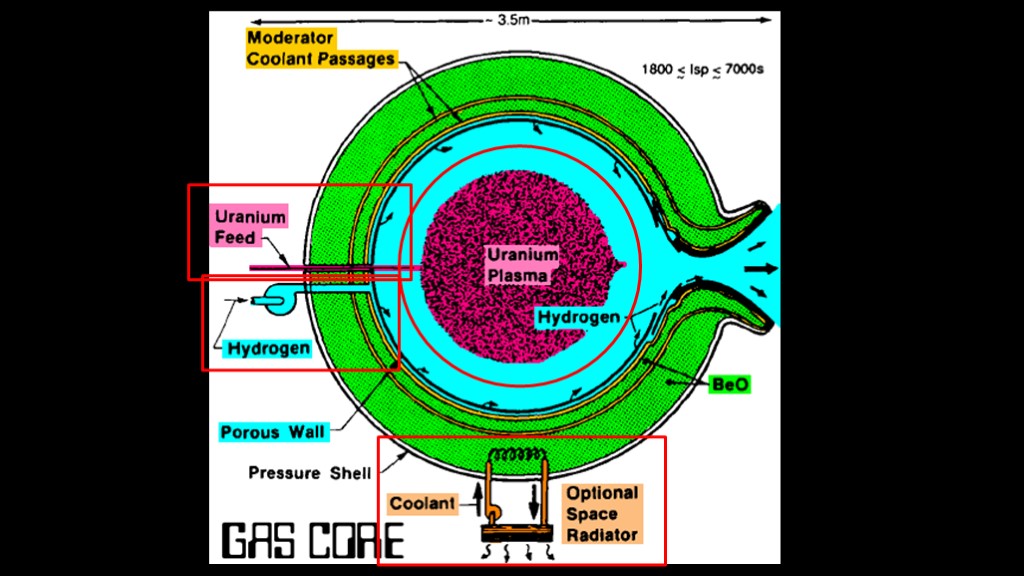
Rather than spend engineering effort trying to keep our reactor core cool, let's let it get as hot as it wants.
Conceptually, it's fairly simple; you have something like a combustion chamber that you inject uranium hexafluoride into, and it starts fissioning and creates a uranium plasma, which may reach temperatures of 50,000 K. That is not a misprint.
It heats up the hydrogen that is being pumped into the chamber (along with Tungsten to improve the heat transfer), and the now very hot hydrogen exits the chamber through the rocket nozzle. As does some of the uranium.
One of the problems is that about 5% of the energy is neutrons and gamma rays, and they heat up the combustion chamber. That can be cooled with hydrogen but it limits your power and therefore your specific impulse to 2000-3000. If you want higher specific impulse, you need a radiator system to pull that heat out of the chamber. That will get you to an Isp of 7000 - 10,000.
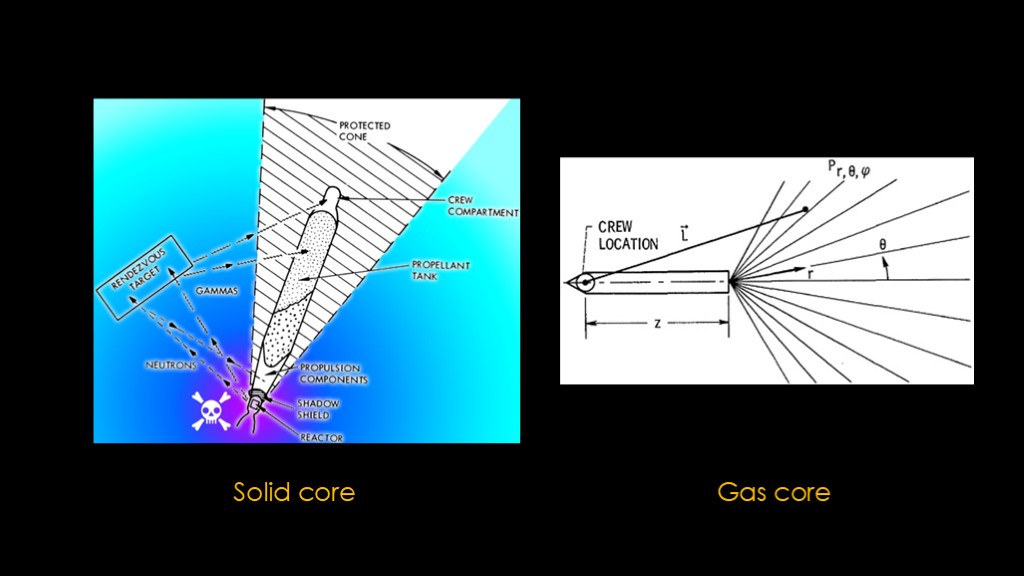
There is a small matter of radiation...
The core in solid core nuclear rockets emits radiation in all directions, but it is possible to use a shadow shield to absorb most of the radiation, and anything in the shadow - such as the crew compartment - receives much less radiation.
In the open gas core you have still-fissioning nuclear fuel exiting through the nozzle and spreading out, and that fuel is emitting a lot of radiation. It's unfortunately outside the shadow and therefore irradiates the crew location directly.
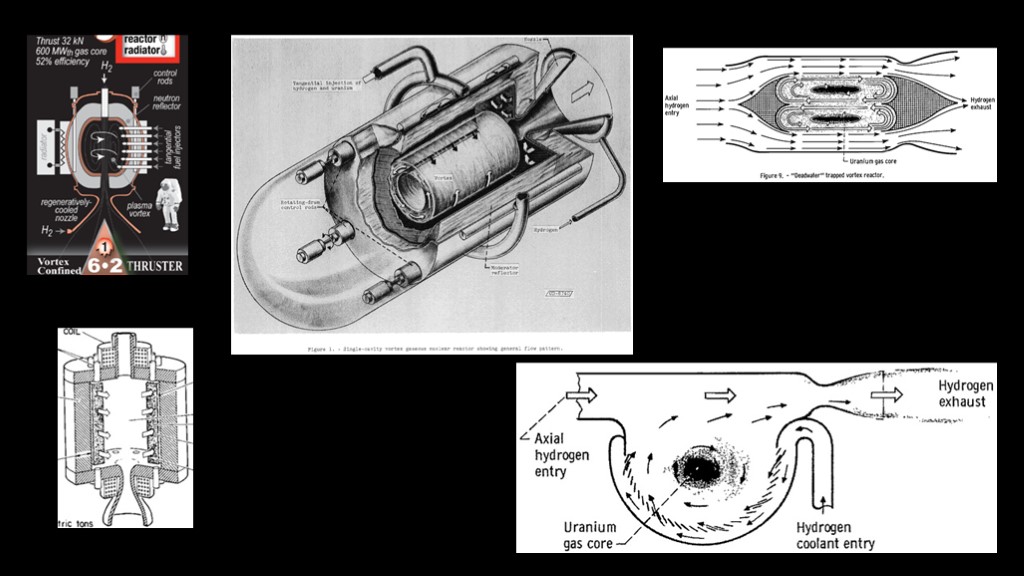
There are many ideas on how to reduce the amount of uranium lost out the nozzle, pretty much all of which involve vortexes.
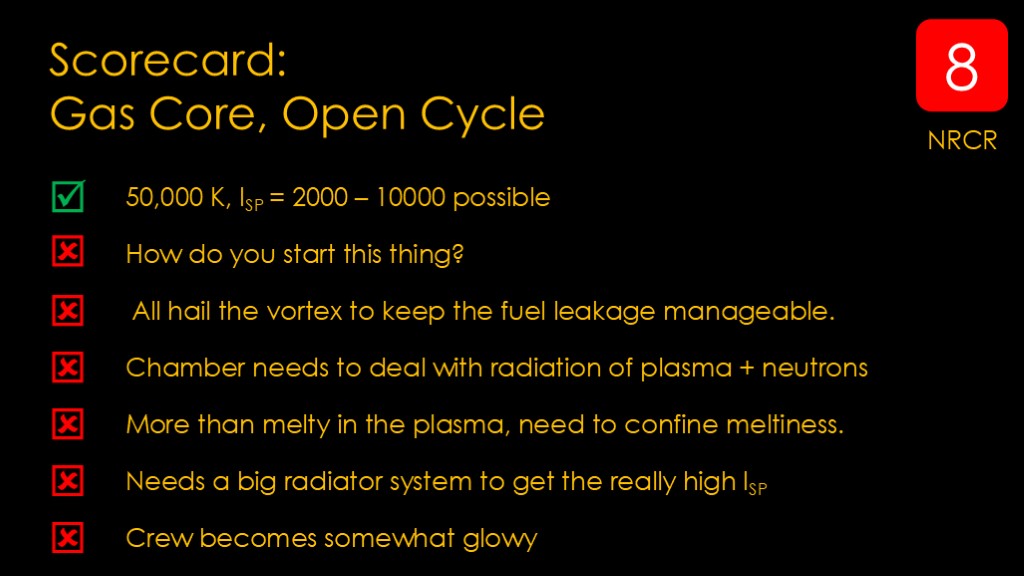
Here's a scorecard for the gas core open cycle engine
On the plus side, the core is very hot and can generate a specific impulse of 2000 to even 10,000
On the negatives side...
How do you create the uranium plasma that starts the thing?
There's a lot of dependence on the power of the vortex to keep the uranium from existing through the nozzle.
The chamber needs to deal with a large amount of radiation + neutrons, and it will be challenging to control the meltiness.
It needs a big radiator system to get the high specific impulse
And the crew will likely becomes somewhat glowy.
It gets a solid 8 on the craziness score.
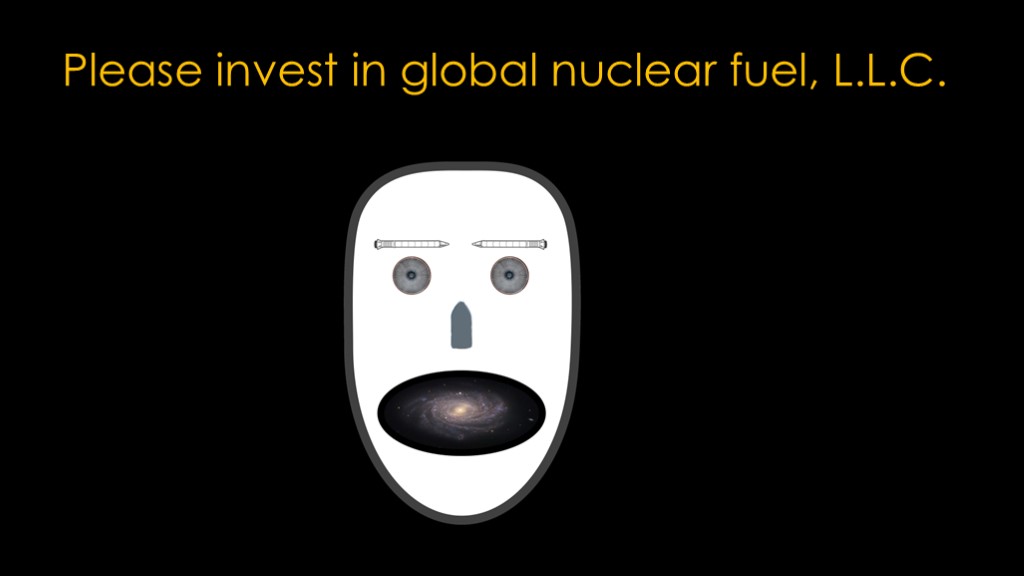
If you enjoyed this video, please invest in global nuclear fuel, LLC.